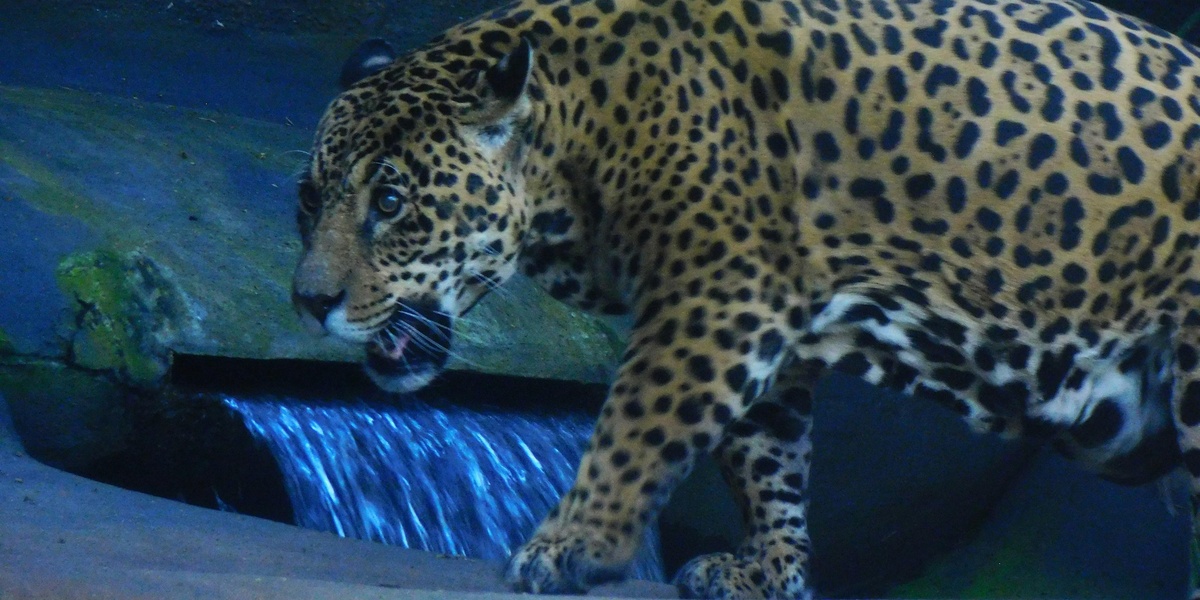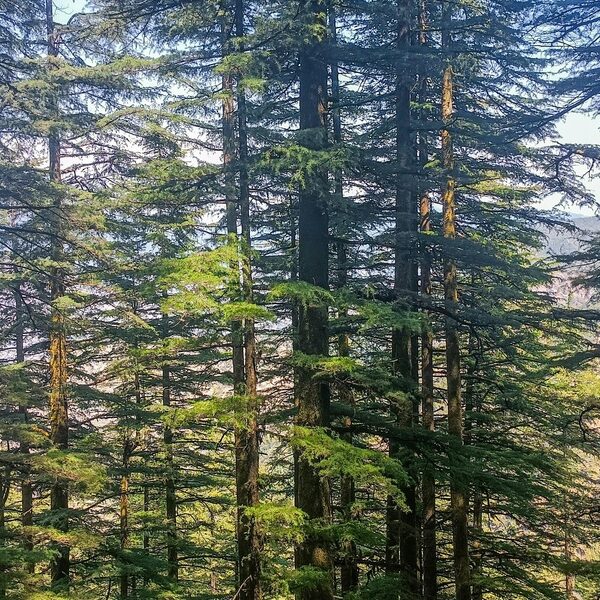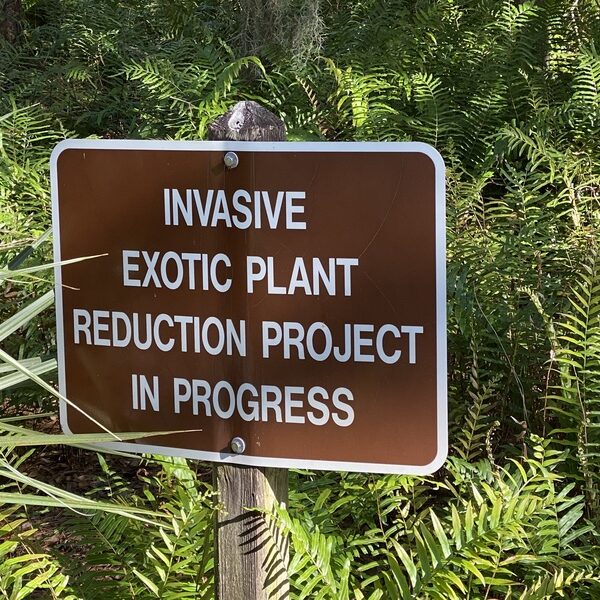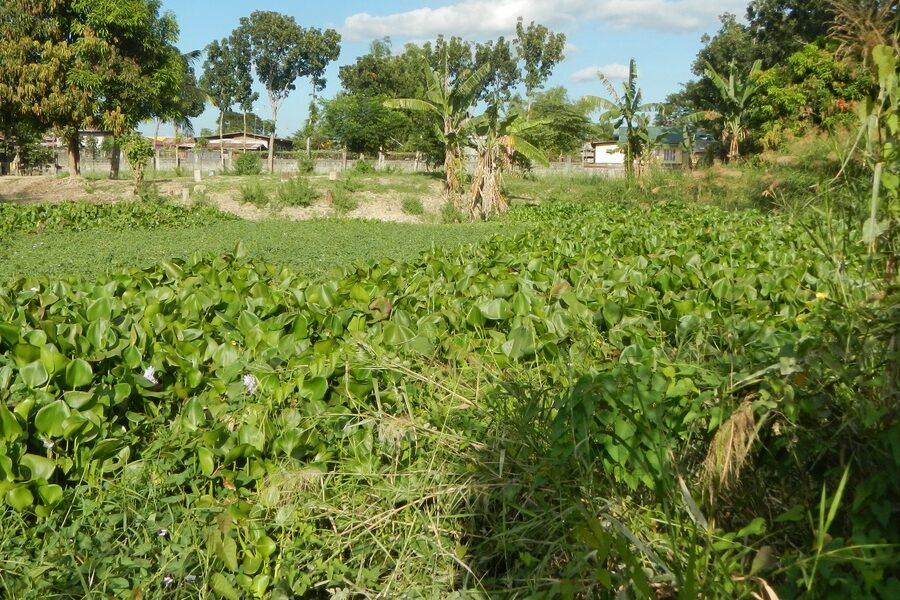From the Andes and cloud forests to the Orinoco plains and Caribbean shorelines, Venezuela supports a mosaic of habitats that shelter a rich variety of wildlife. This list gathers species commonly recorded in field guides, park checklists, and conservation reports to give a clear snapshot of what you might encounter.
There are 61 Venezuela’s native animals, ranging from Andean Cock-of-the-rock to Yellow-shouldered Amazon. For each species you’ll find below Scientific name,Size (cm) / Weight (kg),Status (IUCN).
How current is the conservation status used in the list?
The status column reflects assessments from the IUCN Red List where available; it aims to use the most recent global evaluations but may lag behind local studies or recent taxonomic changes, so check the IUCN site or local conservation groups for the latest updates.
Where should I go to see a variety of these species in the wild?
Visit multiple habitat types—cloud forests and Andean reserves for upland specialists, lowland national parks and river corridors for mammals and reptiles, and coastal dry forests for species like the Yellow-shouldered Amazon—prefer guided tours, local rangers, and seasonal timing to improve sightings.
Venezuela’s Native Animals
| Common name | Scientific name | Size (cm) / Weight (kg) | Status (IUCN) |
|---|---|---|---|
| Jaguar | Panthera onca | 170 cm / 90 kg | Near Threatened (NT); populations are declining due to habitat loss and conflict. |
| Giant Anteater | Myrmecophaga tridactyla | 200 cm / 35 kg | Vulnerable (VU); threatened by habitat loss and vehicle collisions. |
| Capybara (Chigüire) | Hydrochoerus hydrochaeris | 120 cm / 60 kg | Least Concern (LC); abundant in suitable wetland habitats. |
| Orinoco River Dolphin (Tonina) | Inia geoffrensis | 250 cm / 160 kg | Endangered (EN); faces threats from pollution and habitat degradation. |
| Spectacled Bear (Oso Frontino) | Tremarctos ornatus | 180 cm / 150 kg | Vulnerable (VU); threatened by habitat fragmentation in the Andes. |
| Venezuelan Red Howler | Alouatta seniculus | 60 cm / 7 kg | Least Concern (LC); common in forested areas. |
| Giant Otter | Pteronura brasiliensis | 170 cm / 30 kg | Endangered (EN); recovering in some areas but still rare. |
| Three-toed Sloth | Bradypus variegatus | 60 cm / 4 kg | Least Concern (LC); common but vulnerable to deforestation. |
| Lowland Tapir (Danta) | Tapirus terrestris | 200 cm / 225 kg | Vulnerable (VU); threatened by hunting and habitat destruction. |
| White-bellied Spider Monkey | Ateles belzebuth | 50 cm / 9 kg | Endangered (EN); severe population declines from hunting and habitat loss. |
| Giant Armadillo | Priodontes maximus | 150 cm / 32 kg | Vulnerable (VU); rare and elusive, threatened by habitat conversion. |
| Puma | Puma concolor | 180 cm / 70 kg | Least Concern (LC); highly adaptable but faces human-wildlife conflict. |
| Bush Dog | Speothos venaticus | 65 cm / 6 kg | Near Threatened (NT); naturally rare and difficult to spot. |
| Ocelot | Leopardus pardalis | 85 cm / 11 kg | Least Concern (LC); populations are stable in protected areas. |
| Kinkajou | Potos flavus | 50 cm / 3 kg | Least Concern (LC); common in its forest habitat. |
| Venezuelan Troupial (Turpial) | Icterus icterus | 23 cm / 0.07 kg | Least Concern (LC); common and widespread in its range. |
| Harpy Eagle | Harpia harpyja | 100 cm / 7 kg | Near Threatened (NT); requires vast, undisturbed forest tracts to survive. |
| Andean Condor | Vultur gryphus | 300 cm wingspan / 12 kg | Vulnerable (VU); critically endangered within Venezuela with reintroduction efforts underway. |
| Scarlet Ibis | Eudocimus ruber | 60 cm / 0.8 kg | Least Concern (LC); locally abundant, especially in coastal wetlands. |
| Oilbird (Guácharo) | Steatornis caripensis | 45 cm / 0.4 kg | Least Concern (LC); populations are stable in protected cave systems. |
| Andean Cock-of-the-rock | Rupicola peruvianus | 32 cm / 0.22 kg | Least Concern (LC); fairly common in its specific habitat. |
| Guianan Cock-of-the-rock | Rupicola rupicola | 30 cm / 0.21 kg | Least Concern (LC); common in the Guiana Shield region. |
| Red Siskin (Cardenalito) | Spinus cucullatus | 10 cm / 0.01 kg | Critically Endangered (CR); nearly wiped out by the illegal pet trade. |
| Hoatzin | Opisthocomus hoazin | 65 cm / 0.8 kg | Least Concern (LC); common along rivers and oxbow lakes. |
| Sun Parakeet (Sun Conure) | Aratinga solstitialis | 30 cm / 0.12 kg | Endangered (EN); threatened by trapping for the pet trade. |
| Helmeted Curassow | Pauxi pauxi | 90 cm / 3 kg | Endangered (EN); populations have declined due to hunting and habitat loss. |
| Yellow-shouldered Amazon | Amazona barbadensis | 33 cm / 0.27 kg | Vulnerable (VU); threatened by poaching and habitat degradation. |
| Scissor-tailed Hummingbird | Hylonympha macrocerca | 19 cm / 0.007 kg | Endangered (EN); restricted to a tiny range on the Paria Peninsula. |
| Sword-billed Hummingbird | Ensifera ensifera | 23 cm / 0.012 kg | Least Concern (LC); uncommon but widespread in the Andes. |
| Jabiru | Jabiru mycteria | 140 cm / 8 kg | Least Concern (LC); a prominent and common sight in the Llanos. |
| King Vulture | Sarcoramphus papa | 80 cm / 3.5 kg | Least Concern (LC); widespread but in low densities. |
| Toco Toucan | Ramphastos toco | 60 cm / 0.6 kg | Least Concern (LC); common in savannas and open woodlands. |
| Great Potoo | Nyctibius grandis | 55 cm / 0.6 kg | Least Concern (LC); its camouflage makes it hard to spot. |
| Orinoco Crocodile | Crocodylus intermedius | 500 cm / 400 kg | Critically Endangered (CR); nearly hunted to extinction, now extremely rare. |
| Green Anaconda | Eunectes murinus | 600 cm / 150 kg | Not evaluated, but locally common in undisturbed wetlands. |
| Arrau Turtle (Tortuga Arrau) | Podocnemis expansa | 80 cm / 50 kg | Critically Endangered (CR); threatened by egg harvesting and habitat loss. |
| Spectacled Caiman | Caiman crocodilus | 220 cm / 40 kg | Least Concern (LC); the most common crocodilian in Venezuela. |
| Mata Mata Turtle | Chelus fimbriata | 45 cm / 15 kg | Least Concern (LC); widespread in the Amazon and Orinoco basins. |
| Green Iguana | Iguana iguana | 150 cm / 5 kg | Least Concern (LC); very common throughout the country. |
| Common Lancehead (Fer-de-lance) | Bothrops atrox | 120 cm / 1.5 kg | Least Concern (LC); abundant and medically significant. |
| Bushmaster | Lachesis muta | 250 cm / 4 kg | Vulnerable (VU); rare and requires pristine forest habitat. |
| Rainbow Boa | Epicrates cenchria | 170 cm / 1 kg | Least Concern (LC); popular in pet trade but common in the wild. |
| Leatherback Sea Turtle | Dermochelys coriacea | 180 cm / 500 kg | Vulnerable (VU); globally threatened by bycatch and plastic ingestion. |
| Red-footed Tortoise (Morrocoy) | Chelonoidis carbonarius | 35 cm / 10 kg | Not evaluated by IUCN, but heavily hunted for food. |
| Yellow-banded Poison Dart Frog | Dendrobates leucomelas | 4 cm / 0.003 kg | Least Concern (LC); common within its range, popular in captivity. |
| Rancho Grande Harlequin Frog | Atelopus cruciger | 4 cm / 0.004 kg | Critically Endangered (CR); decimated by chytrid fungus. |
| Demonic Poison Frog | Minyobates steyermarki | 2 cm / <0.001 kg | Critically Endangered (CR); endemic to a single mountain, Cerro Yapacana. |
| Glass Frog | Hyalinobatrachium iaspidiense | 2 cm / <0.001 kg | Least Concern (LC); widespread in the Amazon and Guiana regions. |
| Suriname Toad | Pipa pipa | 15 cm / 0.1 kg | Least Concern (LC); widespread in slow-moving Amazonian waters. |
| Red-bellied Piranha | Pygocentrus nattereri | 30 cm / 1 kg | Least Concern (LC); extremely common in its aquatic habitats. |
| Payara (Vampire Fish) | Hydrolycus scomberoides | 60 cm / 5 kg | Not evaluated; sought after by sport fishermen. |
| Electric Eel | Electrophorus electricus | 200 cm / 20 kg | Least Concern (LC); common in freshwater basins of northern South America. |
| Peacock Bass (Pavón) | Cichla ocellaris | 70 cm / 6 kg | Least Concern (LC); a prized game fish in its native range. |
| Orinoco Altum Angelfish | Pterophyllum altum | 18 cm height / 0.1 kg | Not evaluated; a highly prized aquarium fish. |
| Cardinal Tetra | Paracheirodon axelrodi | 4 cm / <0.001 kg | Least Concern (LC); one of the most popular aquarium fish in the world. |
| Arapaima | Arapaima gigas | 250 cm / 150 kg | Data Deficient (DD); overfished in many parts of its range. |
| Goliath Birdeater | Theraphosa blondi | 30 cm leg span / 0.17 kg | Not evaluated; common in its rainforest habitat. |
| Blue Morpho Butterfly | Morpho peleides | 15 cm wingspan / <0.001 kg | Not evaluated; common in tropical forests. |
| Hercules Beetle | Dynastes hercules | 15 cm / 0.1 kg | Not evaluated; widespread but sought after by collectors. |
| Leafcutter Ant | Atta cephalotes | 1.5 cm / <0.001 kg | Not evaluated; extremely abundant and ecologically important. |
| Venezuelan Suntiger Tarantula | Psalmopoeus irminia | 15 cm leg span / 0.05 kg | Not evaluated; a popular arboreal species in the pet trade. |
Images and Descriptions

Jaguar
The largest cat in the Americas, this apex predator roams Venezuela’s forests, wetlands, and grasslands. It’s a powerful symbol of the wild, found in the Amazon, Llanos, and Orinoco Delta regions.

Giant Anteater
A bizarre yet magnificent mammal of the Llanos grasslands and forests. It uses its long snout and massive claws to feast on ants and termites, consuming tens of thousands daily.

Capybara (Chigüire)
The world’s largest rodent, this semi-aquatic mammal lives in large social groups in Venezuela’s Llanos. They are often seen grazing on riverbanks or wallowing in the water to escape the heat.

Orinoco River Dolphin (Tonina)
A unique freshwater dolphin found in the Orinoco River basin. Known for its pinkish hue and flexible neck, it navigates the murky river waters using sophisticated echolocation to hunt fish.

Spectacled Bear (Oso Frontino)
South America’s only native bear species, found in the high-altitude cloud forests of the Venezuelan Andes. It is primarily herbivorous, feeding on fruits, palms, and bromeliads.

Venezuelan Red Howler
Famous for its deafening dawn chorus, this monkey’s roar can travel for kilometers. It lives in troops in a wide range of forests, from the Andes foothills to the Amazon.
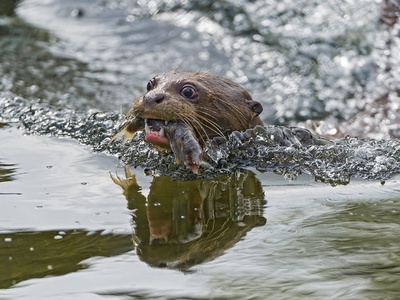
Giant Otter
A highly social and vocal mammal, the “river wolf” lives in family groups in the Orinoco and Amazon river systems. It is an apex predator, hunting fish with remarkable agility.
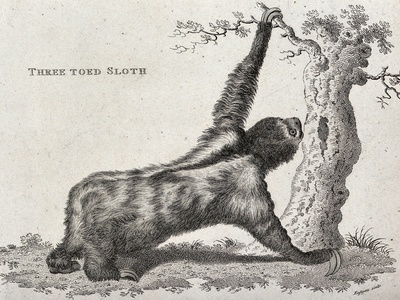
Three-toed Sloth
An icon of the Neotropics, this slow-moving mammal spends its life in the canopy of Venezuela’s lowland and montane forests. Its fur hosts a unique ecosystem of algae, providing camouflage.
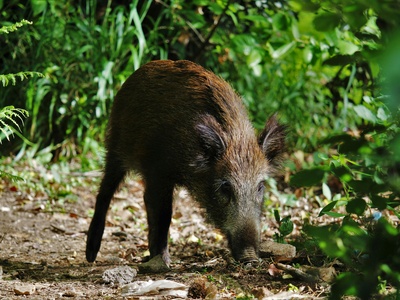
Lowland Tapir (Danta)
A large, solitary herbivore with a distinctive prehensile snout. It inhabits forests and wetlands throughout Venezuela, acting as an important “gardener” by dispersing seeds.
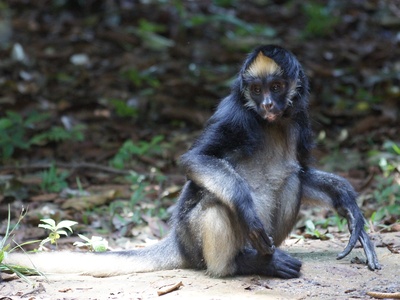
White-bellied Spider Monkey
An agile primate with incredibly long limbs and a prehensile tail. It swings through the high canopy of forests south of the Orinoco River, feeding primarily on ripe fruit.
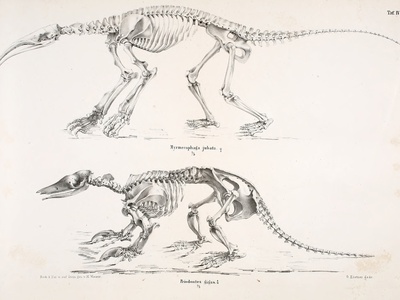
Giant Armadillo
The largest living armadillo, this nocturnal insectivore uses its enormous front claws to dig for termites and ants. It inhabits a range of habitats from the Amazon to the Llanos.
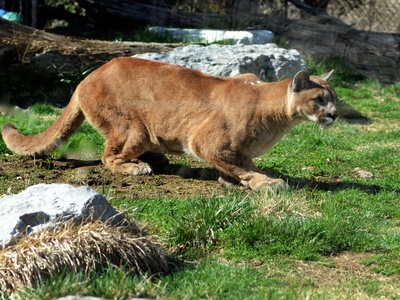
Puma
Venezuela’s second-largest cat is found in nearly every habitat, from the Andes mountains to coastal deserts. A stealthy and powerful hunter, it preys on deer, capybaras, and other animals.
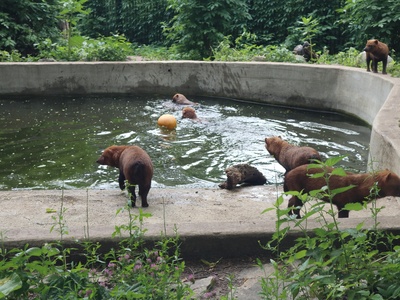
Bush Dog
A unique, short-legged canid that hunts in small packs. It inhabits forests and wet savannas south of the Orinoco River, preying on large rodents like pacas and agoutis.
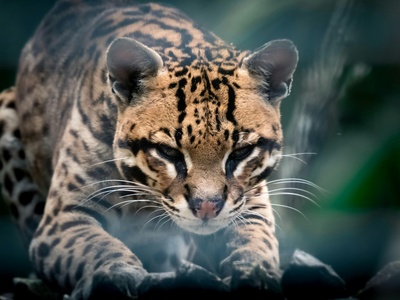
Ocelot
A beautifully spotted medium-sized wild cat found throughout Venezuela’s forests and scrublands. It is primarily nocturnal, hunting small mammals, birds, and reptiles on the forest floor.
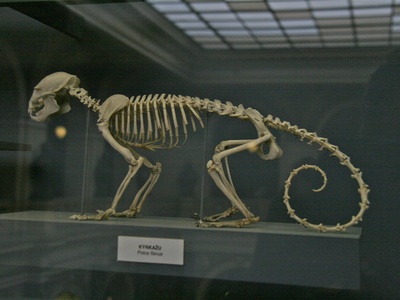
Kinkajou
A nocturnal mammal with a prehensile tail, often mistaken for a monkey. It lives in the forest canopy, feeding on fruit and nectar, and is found in many of Venezuela’s forested regions.

Venezuelan Troupial (Turpial)
Venezuela’s vibrant national bird, easily recognized by its striking black and orange plumage. It inhabits dry forests and savannas across the country’s northern and central regions, known for its melodious song.
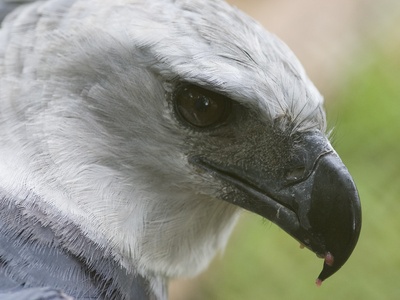
Harpy Eagle
One of the world’s most powerful eagles, it preys on sloths and monkeys in the canopy of rainforests south of the Orinoco. Its massive talons are as large as a grizzly bear’s claws.

Andean Condor
A magnificent vulture of the high Andes, soaring on thermal updrafts. This scavenger plays a vital role as a natural cleaner, and seeing one in the wild is an unforgettable experience.

Scarlet Ibis
A breathtakingly vibrant bird that lives in large flocks in coastal mangroves and wetlands, particularly in the Orinoco Delta. Its brilliant scarlet color comes from pigments in the crustaceans it eats.

Oilbird (Guácharo)
A unique nocturnal bird that nests in caves, most famously at Cueva del Guácharo. It is the only bird that navigates in total darkness using echolocation, like a bat.

Andean Cock-of-the-rock
The male is a brilliant red-orange bird famous for its elaborate lekking displays in the cloud forests of the Venezuelan Andes. They gather at dawn to dance and attract females.
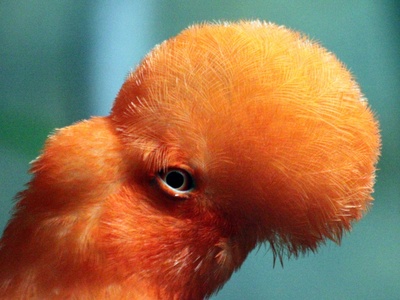
Guianan Cock-of-the-rock
Found on the tepuis and in the forests of the Guiana Shield. The stunning orange male also performs communal courtship displays, making it a prized sighting for birdwatchers.

Red Siskin (Cardenalito)
A tiny, fiery red finch that is one of Venezuela’s most endangered birds. Conservation efforts are underway to protect its remaining populations in dry forests and foothills.
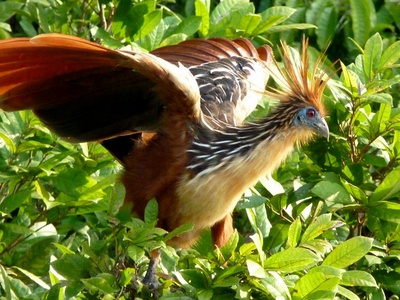
Hoatzin
A bizarre, prehistoric-looking bird found in the Orinoco Delta and Llanos. Its chicks have claws on their wings to climb branches, and it digests leaves through bacterial fermentation like a cow.
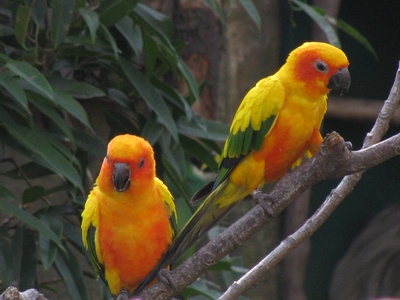
Sun Parakeet (Sun Conure)
An incredibly bright and social parakeet with golden-yellow and orange plumage. It is native to a small area in the Guiana Shield region of southeastern Venezuela and neighboring countries.
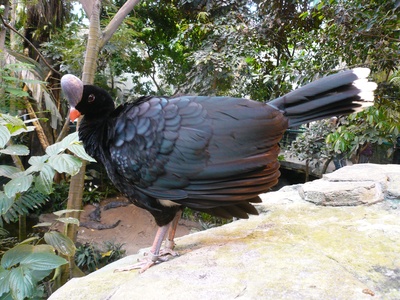
Helmeted Curassow
A large, striking bird of the Andean cloud forests. It is named for the prominent blue or reddish casque on its bill. It forages on the forest floor for fallen fruits and seeds.
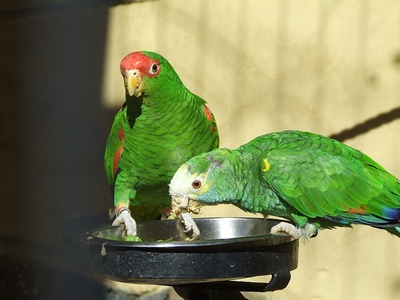
Yellow-shouldered Amazon
A beautiful parrot found in the arid coastal zones and islands of Venezuela, like Margarita Island. Strong conservation actions have helped stabilize some of its populations.
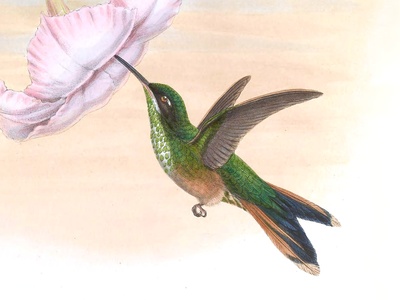
Scissor-tailed Hummingbird
A spectacular and rare endemic hummingbird. The male has an exceptionally long, deeply forked tail. It is a prized sighting, found only in the montane forests of the Paria Peninsula.

Sword-billed Hummingbird
This Andean cloud forest hummingbird has a bill longer than its body, the longest of any bird relative to its size. It’s perfectly adapted to feed on flowers with long corollas.

Jabiru
An enormous stork, one of the tallest flying birds in the Americas. It is easily identified by its massive bill and black head with a red neck pouch. It stalks fish and amphibians in the wetlands of the Llanos.
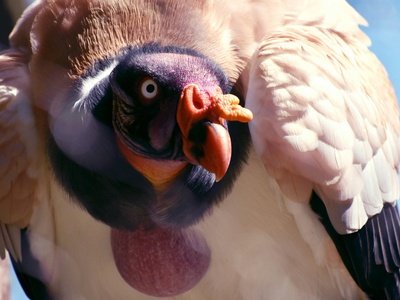
King Vulture
A stunningly colorful vulture with a white body, black flight feathers, and a brightly colored bald head. It soars over lowland forests, often being the first to open large carcasses for other scavengers.
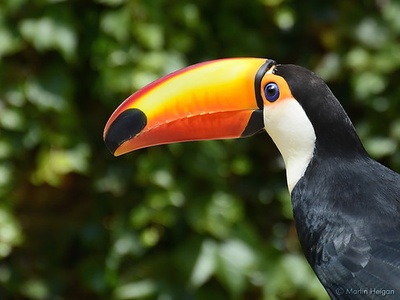
Toco Toucan
The largest and best-known toucan, recognized by its enormous, colorful bill. It is found in the savannas and open country of southeastern Venezuela, feeding on fruits and insects.

Great Potoo
A master of disguise, this large nocturnal bird perches perfectly still on branches, mimicking a dead stump. It is found in lowland forests, known for its haunting, guttural calls at night.
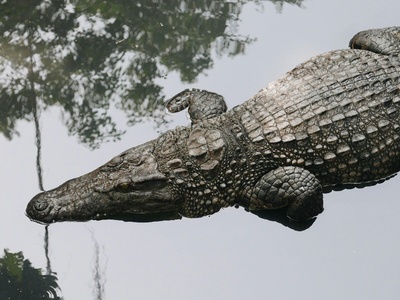
Orinoco Crocodile
One of the largest crocodiles in the world, endemic to the Orinoco River basin. This apex predator is now confined to a few remote rivers in the Llanos, with conservation programs fighting for its survival.
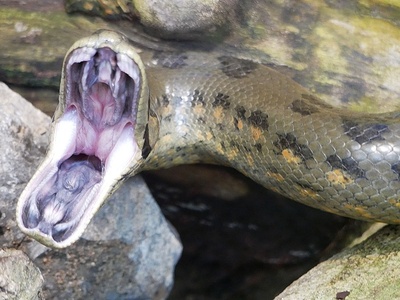
Green Anaconda
The world’s heaviest snake, a massive aquatic constrictor found in the slow-moving waters of the Llanos and Orinoco Delta. It preys on capybaras, caimans, and deer.

Arrau Turtle (Tortuga Arrau)
South America’s largest side-necked turtle, historically famous for its mass nesting events on Orinoco River beaches. Conservation efforts are crucial to protect its remaining nesting sites.
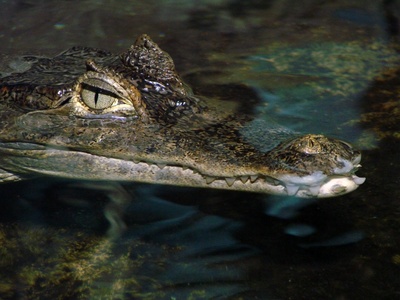
Spectacled Caiman
A highly adaptable caiman found in virtually all lowland aquatic habitats. It is named for the bony ridge between its eyes that resembles a pair of spectacles.
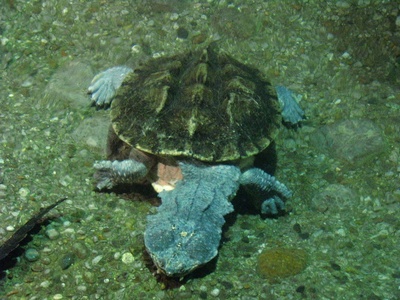
Mata Mata Turtle
A bizarre-looking aquatic turtle with a flat head and shell that resembles bark and leaves. It is a sedentary ambush predator, sucking in fish with a rapid gulp of water.
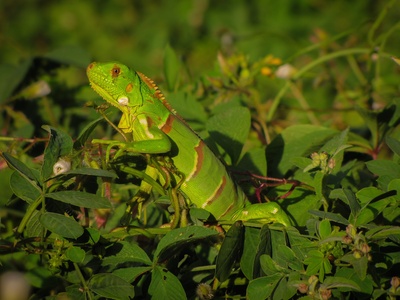
Green Iguana
A large, arboreal lizard found in forests and even urban areas across Venezuela. Despite its name, it can be various colors. It is primarily herbivorous and an excellent swimmer.
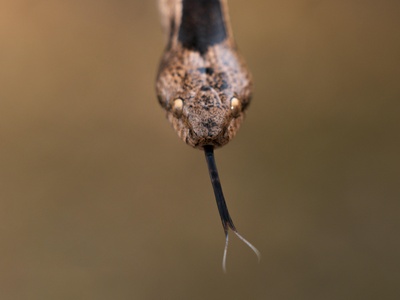
Common Lancehead (Fer-de-lance)
A highly venomous pit viper responsible for many snakebites in South America. It is found in forests and agricultural areas throughout Venezuela south of the Orinoco.
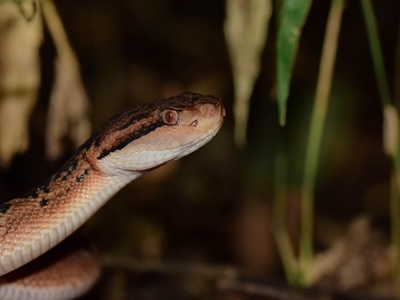
Bushmaster
The longest venomous snake in the Western Hemisphere. This formidable pit viper is found in the deep primary rainforests of southern Venezuela. It is rarely encountered due to its reclusive nature.

Rainbow Boa
Named for the iridescent sheen on its scales, this beautiful boa is found in forests and savannas. It is a nocturnal constrictor, preying on small mammals and birds.
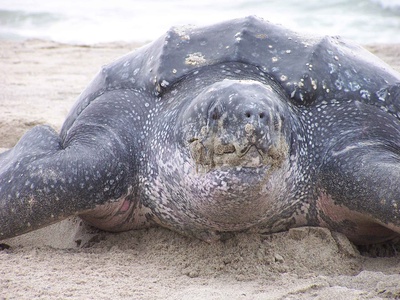
Leatherback Sea Turtle
The largest turtle on Earth, this ocean giant nests on Venezuela’s Caribbean beaches. It has a unique leathery shell instead of a hard, bony one and feeds primarily on jellyfish.
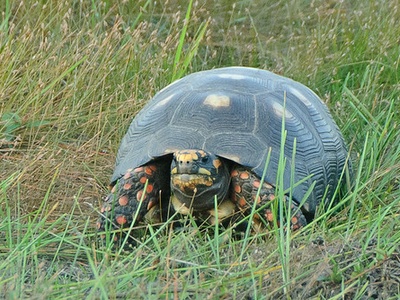
Red-footed Tortoise (Morrocoy)
A common tortoise of Venezuela’s savannas and forests, recognizable by the red or orange scales on its legs. It is an important seed disperser for many native fruit trees.

Yellow-banded Poison Dart Frog
A striking frog with a bold black and yellow pattern, native to the forests of the Guiana Shield in Venezuela. Its bright colors warn predators of its toxic skin secretions.

Rancho Grande Harlequin Frog
Once common in the cloud forests of the Cordillera de la Costa, this beautiful toad was thought to be extinct until its rediscovery. It remains one of Venezuela’s most threatened amphibians.
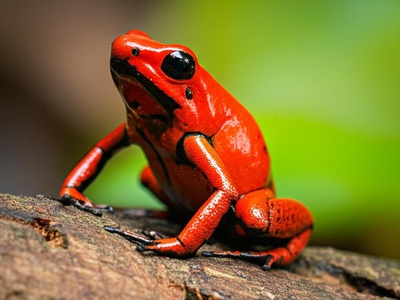
Demonic Poison Frog
This tiny, bright red frog is one of the world’s most range-restricted amphibians. It lives only in the humid, mossy environment atop a single tepui in the Amazon state.

Glass Frog
Named for its translucent belly skin, through which its internal organs are visible. This tiny tree frog lives on leaves overhanging streams in the rainforests of southern Venezuela.
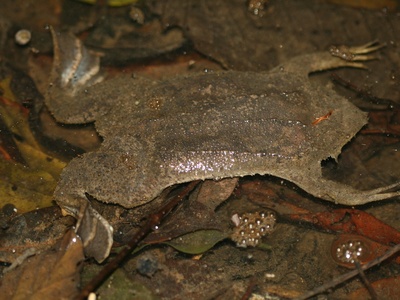
Suriname Toad
A truly strange, flat-bodied aquatic frog. The female carries her eggs embedded in the skin of her back, where the tadpoles develop into fully formed froglets before emerging.
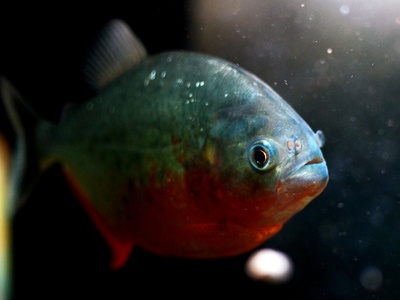
Red-bellied Piranha
Infamous for its sharp teeth and feeding frenzies, this fish is a keystone species in the Orinoco and Amazon river systems. It is an omnivore, playing roles as both predator and scavenger.

Payara (Vampire Fish)
A fearsome-looking fish from the Orinoco and Amazon basins, armed with two enormous fangs on its lower jaw. These fangs are used to impale its prey, primarily other fish.

Electric Eel
Not a true eel but a knifefish, it can generate powerful electric shocks of up to 600 volts to stun prey and deter predators. It inhabits muddy, slow-moving waters in the Llanos and Orinoco.
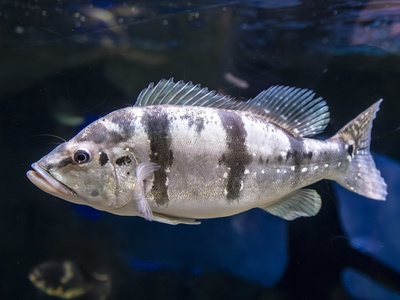
Peacock Bass (Pavón)
A large, colorful cichlid native to the rivers of Venezuela. It is a voracious predator and a world-renowned sport fish, known for its aggressive strikes and powerful fights.

Orinoco Altum Angelfish
A graceful cichlid with a tall, laterally compressed body and long, elegant fins. It is native to the upper Orinoco basin, inhabiting calm, acidic blackwater streams.
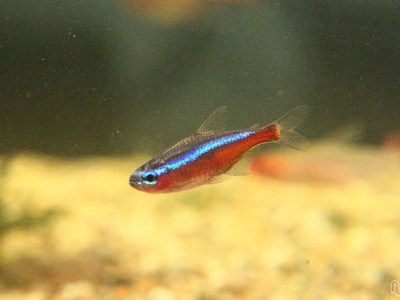
Cardinal Tetra
This tiny, jewel-like fish forms massive shoals in the blackwater tributaries of the Orinoco River. Its brilliant neon blue stripe and red body make it a stunning sight.
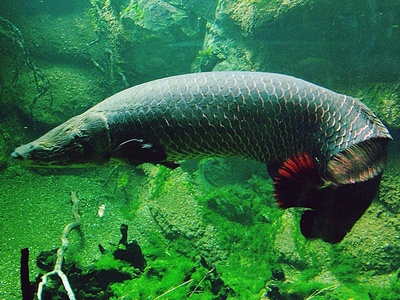
Arapaima
One of the world’s largest freshwater fish, it is an air-breather that must surface periodically. Though more common in the Amazon, its range extends into parts of Venezuela’s river systems.
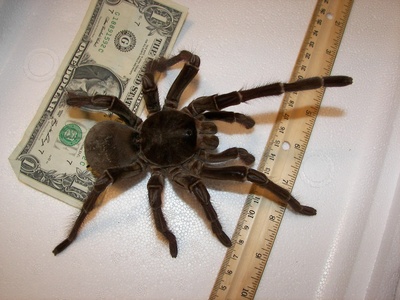
Goliath Birdeater
The world’s largest spider by mass. This tarantula inhabits the rainforest floor of southern Venezuela. Despite its name, it primarily eats insects and small vertebrates, not birds.
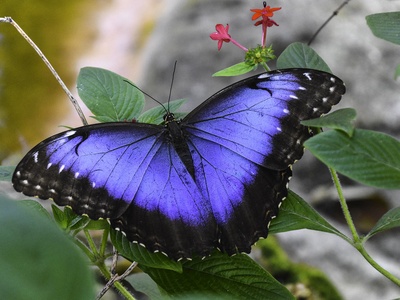
Blue Morpho Butterfly
A spectacular butterfly known for its huge, iridescent blue wings. It flits along forest edges and rivers throughout Venezuela. The brilliant color is due to the microscopic structure of its wing scales.
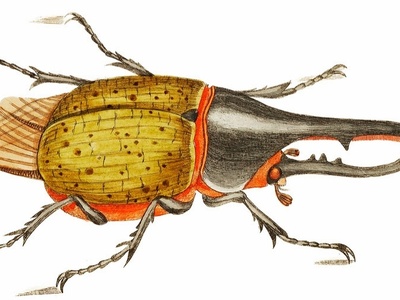
Hercules Beetle
One of the largest beetles in the world. The male possesses an enormous horn that it uses to fight other males for mates. It is found in the montane and lowland forests of Venezuela.
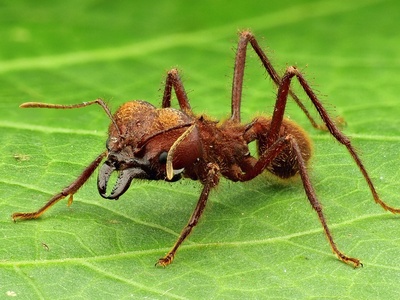
Leafcutter Ant
These ants form vast, complex societies and are famous for carrying leaf fragments back to their nests. They don’t eat the leaves but use them to cultivate a special fungus for food.
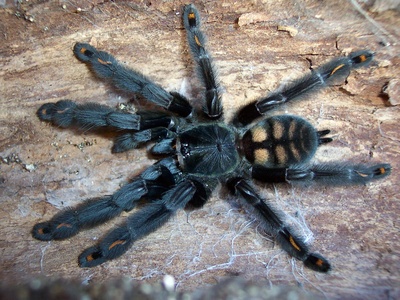
Venezuelan Suntiger Tarantula
A beautiful, jet-black tarantula with vibrant orange chevrons on its legs. This arboreal species is native to the humid forests of the Gran Sabana region in southeastern Venezuela.
